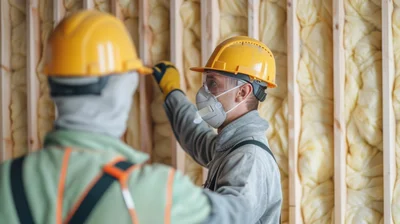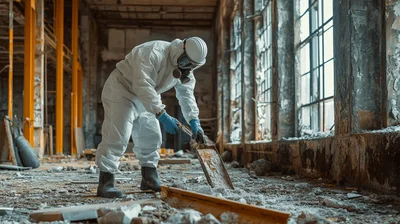
Louisiana insulators are among those professions that face a high risk for asbestos exposure. Insulation work is a fundamental part of Louisiana's construction industry, with many workers involved in installing and removing insulation materials. Properly installed insulation is essential for maintaining comfortable temperatures and building energy efficiency. Moreover, with Louisiana's humid climate, proper insulation is crucial for preventing mold growth and protecting against moisture-related damage.
Asbestos insulation was a primary type of insulation used in the past. Asbestos is a fibrous mineral known for its heat-resistant properties and durability, making it a seemingly ideal material for insulation purposes. However, its fibrous nature poses severe health hazards when those fibers become airborne and are inhaled. Louisiana insulators who have worked or are still working in buildings with asbestos-containing insulation are at risk of developing severe asbestos-related diseases. This page provides an overview of products that may cause asbestos exposure for Louisiana insulators, building areas that are particularly high risk, and the health risks associated with asbestos exposure for people working with insulation in Louisiana.
Although asbestos is not a specific type of insulation, it was added to other materials to enhance their fire-resistant and insulating qualities. This mixture was then used in various insulation products, including:
Louisiana insulation workers involved in the installation, repair, or removal of these products were heavily exposed to asbestos fibers and face a risk of developing asbestos-related diseases. A wide range of other Louisiana maintenance and construction workers such as plumbers or electricians may have been exposed to asbestos fibers through their jobs if they came into contact with the insulation.
Select a location where you or a household member worked to see the jobsites in that location with known asbestos exposure.
Louisiana insulators working in older buildings constructed before 1980 are at greater risk of exposure to asbestos-containing insulation. These include homes, schools, hospitals, and commercial buildings built between the 1920s and the late 1970s.
Some Louisiana locations where asbestos exposure is most likely to be found in older Louisiana buildings include basements, crawl spaces, attics, boiler rooms, and wall and ceiling cavities. It is important to note that asbestos-containing insulation in a building is not always immediately apparent. Asbestos fibers are microscopic, so it may take specialized testing to determine if a building contains asbestos insulation.

Louisiana insulation workers are particularly vulnerable to asbestos exposure due to the nature of their profession. These workers frequently install, remove, or repair insulation materials in buildings, which puts them directly in contact with asbestos-containing products. Asbestos fibers can become airborne during these activities and, when inhaled, can cause life-altering health issues. In past decades, Louisiana insulation workers were frequently not aware of the presence of asbestos-containing materials in a building and therefore would not have taken proper precautions to protect themselves from exposure.
Other Louisiana workers who may be at risk for asbestos exposure due to their work with insulation include HVAC technicians, plumbers, electricians, construction workers, and demolition workers.
Since asbestos fibers are small and lightweight, they can easily become airborne and inhaled by people working with or around them without the knowledge of the workers. Asbestos exposure can result in life-altering health issues, each with its own set of symptoms and outcomes.
Asbestosis is one such condition, a chronic lung disease that manifests due to inhaling asbestos fibers, leading to scar tissue formation inside the lungs. This scarring causes shortness of breath and persistent coughing and can permanently damage lung function, making even routine activities strenuous.
Another dire consequence of asbestos exposure is mesothelioma, a rare but aggressive cancer primarily affecting the lining of the lungs. However, it can also target the tissue around the heart or abdomen. Its rarity doesn't lessen its severity; mesothelioma is difficult to diagnose early, often leading to a poor prognosis. Patients might experience chest pain, painful coughing, and significant weight loss, among other symptoms.
Lastly, lung cancer, commonly associated with smoking, can also be a direct result of asbestos exposure. It affects the lung's cells, leading to abnormal growth that can spread beyond the lungs. Symptoms include coughing (sometimes with blood), chest pain, wheezing, and weight loss.
Unlike mesothelioma, lung cancer has a higher incidence rate and can affect individuals without a history of smoking, underscoring the hazardous nature of asbestos. Each of these diseases highlights the critical need for precautions when dealing with asbestos to prevent these serious health outcomes.
Feel free to reach out to us by filling out our form or giving us a call.
We will contact you to discuss your case, providing a free, no-obligation consultation.
You can choose to proceed with filing the lawsuit and await compensation.
Anyone who worked at, or lived with someone who worked at, these facilities could have been exposed to asbestos, which could have taken decades to result in cancer.
We Only Get Paid if We Collect for You

We provide free no-obligation asbestos exposure case review for Louisiana Insulators

We work on a contingency basis, meaning there are no fees unless we collect for you

We have experience winning claims against huge multi-national corporations

Fill the form below our team experts will contact you